Control is an interesting objective for golfers because it has multiple meanings. One is to control your emotions and stay in the moment. I did that at the US Open, and it’s a big reason I won the tournament. I never got ahead of myself. I tried to execute each shot without thinking beyond it. When you reel off a few pars or birdies in a round, I’m sure a lot of you start to daydream about breaking 80 or shooting your career-best score or winning your club championship. It’s been my experience that success in golf comes from not letting your mind wander from the shot you’re about to hit.
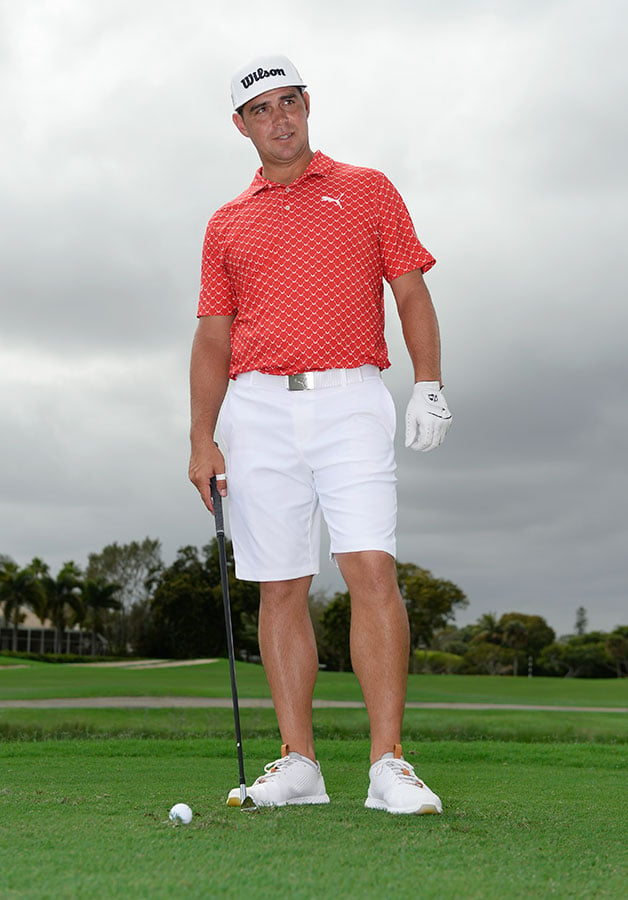 Another meaning is controlling the ball, and that comes from two things. The first is making a swing that’s easily repeatable and produces a predictable ball flight – like the iron shot I’m using more this year that punches a hole in the sky. Not only did it help me hit 52 of the 72 greens in regulation at the US Open (72 percent), it has made me a much more consistent player. Since the start of last season, I’ve had 11 top-10 finishes in 28 PGA Tour events. I’ll teach that shot to you on the following pages.
Another meaning is controlling the ball, and that comes from two things. The first is making a swing that’s easily repeatable and produces a predictable ball flight – like the iron shot I’m using more this year that punches a hole in the sky. Not only did it help me hit 52 of the 72 greens in regulation at the US Open (72 percent), it has made me a much more consistent player. Since the start of last season, I’ve had 11 top-10 finishes in 28 PGA Tour events. I’ll teach that shot to you on the following pages.
The other part of controlling the ball comes from understanding what you’re trying to do in your swing and how to fix it when things are off. For years, I felt like I was just whacking at the ball, trying to see how far I could hit it, especially with the driver. Whatever the coach I was working with at the time told me to do, I would just go along with it. Not anymore. My coaches (I work with Butch Harmon, Pete Cowen and Phil Kenyon) have been great at showing me how to take ownership of my game and how to repair it when they’re not around. Now I’m making subtle adjustments when the ball is not moving the way I want it to. Early in the US Open week, Butch asked if my swing needed a look, but I was confident. I told him, “I just want to go play.” I ended up driving it great, and I’ll show my technique with that club, too.
Last but not least, I have better control in my short game. Over the years, it has probably held me back from winning more. I’ve put in a lot of work on my putting with Phil, and Pete has really changed my chipping and bunker techniques. That chip I hit off the green on 17 on Sunday at the US Open that almost went in? I’m not sure I could have hit that so cleanly in the past. I’ll walk you through how I clipped that shot. Turn the page and see if my advice on control can help you achieve a big W.
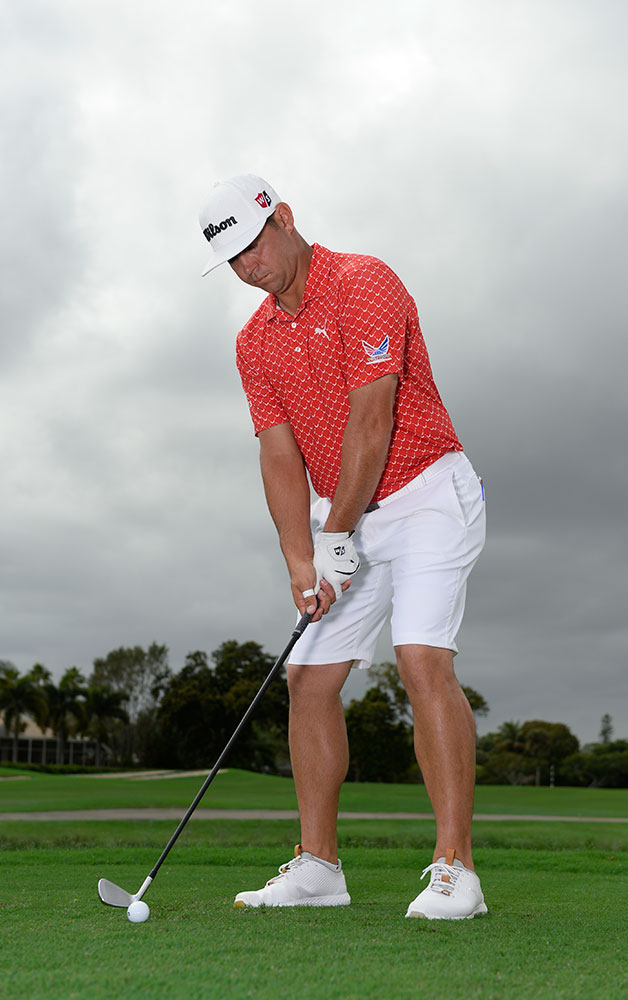 the pre-shot routine
the pre-shot routine
Set up for control
I love to play three-quarter iron shots. They take a lot of extra movement out of the swing, which increases my chance of hitting it solid with the face square to the target. They also lower the flight, which is better if you’re trying to control where the ball lands.
I think of all my iron shots as punches– not punch shots, but how much pressure I’m applying to the hit. I say this because even though I’m taking something off the ball on a three-quarter shot, I’m still compressing it with a “punch”.
I take extra club because I’m swinging at roughly 80 percent of my maximum effort.I also grip down on the handle [left]. This takes some distance off the shot, too, but it’s important because it increases the chance of hitting the ball flush. I’m sure you hit your short irons more solidly than the longer ones. Last setup tip: play the ball no farther forward than centre in your stance for better contact.
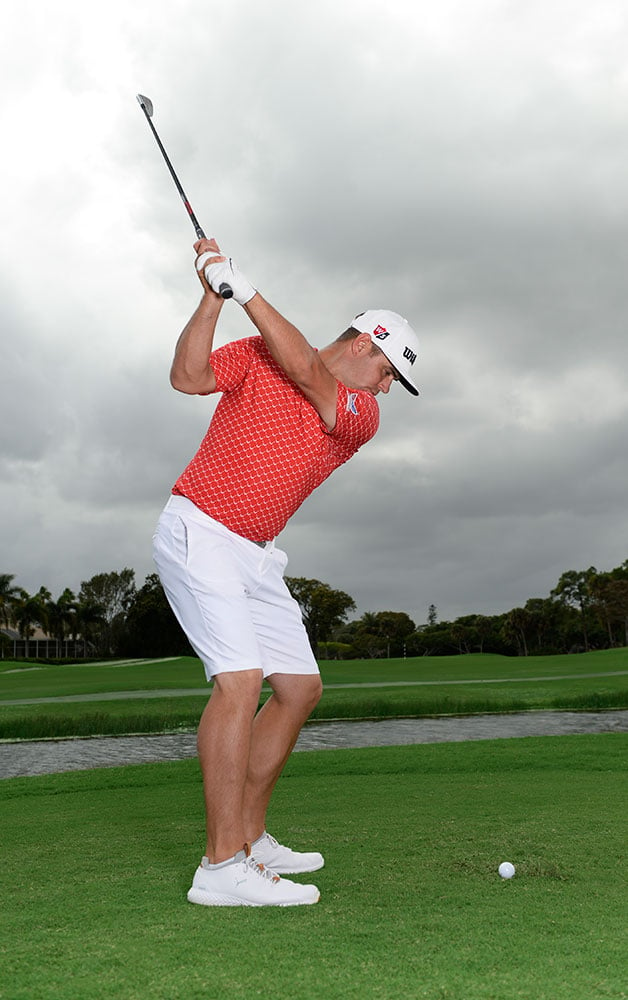 the technique
the technique
Let your body lead the way
The point I’m about to make might sound contradictory, but I don’t want to mislead you. My hands are the only thing attached to the club, so they always play a huge role in whatever swing I make. Like Pete Cowen says, “All the best players do it with their hands.” But now comes the contradiction: for this three-quarter shot, there is a lot less hand action when you swing. It’s a shorter, more controlled motion back and through, and it feels like it’s all happening because of body rotation.
And when I say it’s a cut-off swing, a good thought to have is shoulders to shoulders. This will get you to shorten your backswing [left] and follow-through. You’ll soon find with this shorter, controlled swing that your body, arms and club are all moving together at roughly the same speed. It might feel very slow at first, but wait until you see the ball jump off the clubface and pierce the air.
the strike
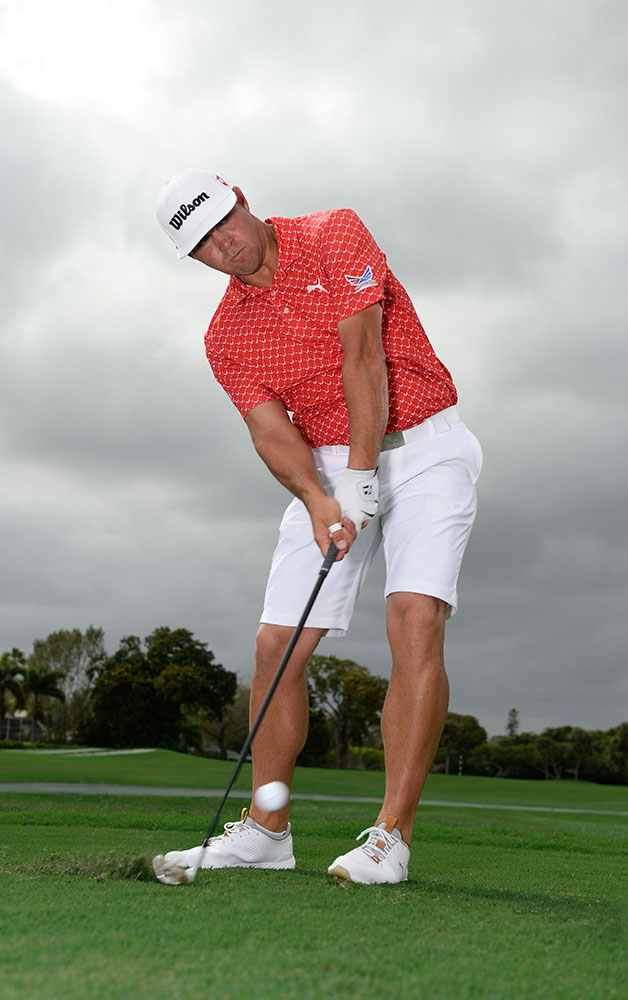 Give the ball a punch
Give the ball a punch
If you’re looking at this photo of me just after I hit the ball [below], you might be fixated on the fact that my head has rotated towards the target. That’s just something I do (and so do a lot of other pros). It gets me to swing through the ball and apply some force. Remember, it’s a punch, not a slap.
What’s more important about this photo, though harder to see because of the blur, is that my clubface is still square to the
target. That’s why I love this shot so much. The clubface squares up easier and stays square longer. When you start to groove it, you’ll find you’re no longer worried about where the ball is going because it doesn’t move very much left or right. The key is to keep rotating your body in the through-swing until your chest faces the target. Do that, and you don’t have to worry about much else.
Now on to some of the things I’ve been focusing on to control the driver.
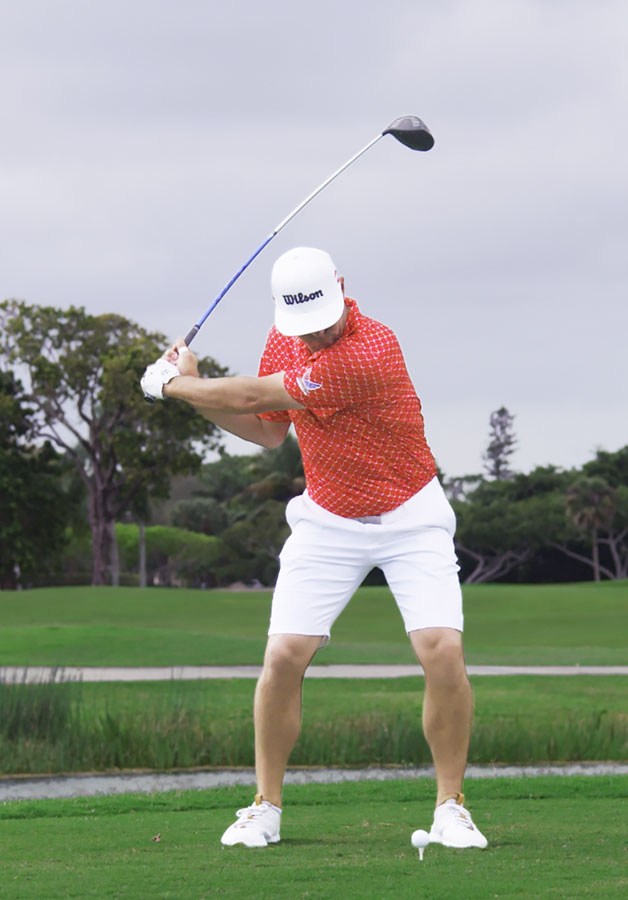 the total drive
the total drive
Blend power and accuracy
Although I’ve never had a problem cranking a drive – I’ve averaged longer than 300 yards off the tee in all my 11 seasons on the PGA Tour – my accuracy needed a boost. I wanted to play my second shots from the fairway more often but without giving up distance. What I found was that I could have both, or at least be a lot more accurate, if I knew where the clubface was at all times. So I recommend you swing your driver at a speed that allows you to feel the face squaring up as it reaches the ball – even if that feels like you’re only using 50-percent effort. As you become more aware of how to control the face, you’ll be able to pick up speed. But even if you don’t swing as hard as you used to, you’ll be surprised at how effective your drives are if you simply focus on hitting the ball with a square face, like you see me doing here in this sequence.
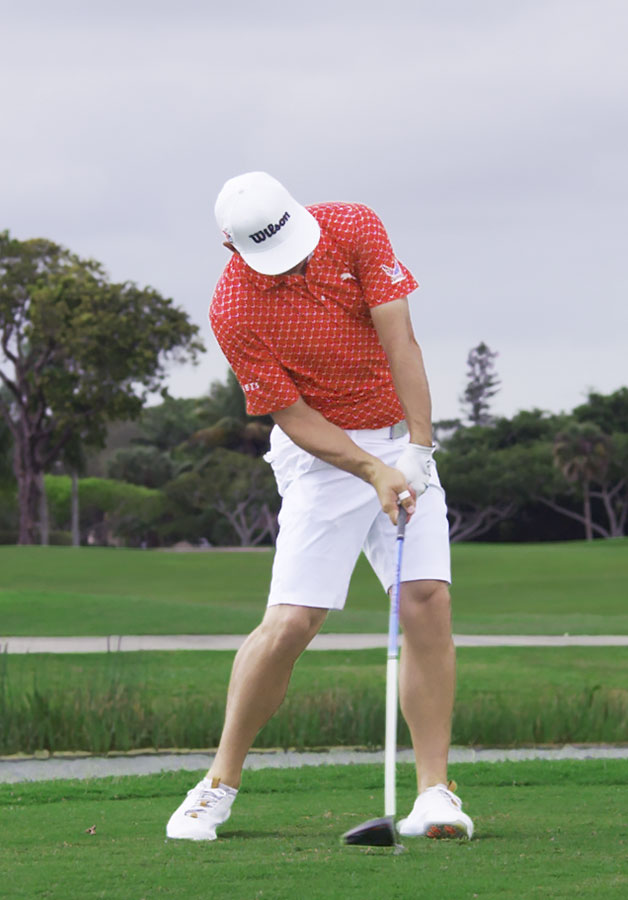 Driver control also has to do with swing length. I like what Pete Cowen says about the backswing: length doesn’t matter as much as how you coil. You can see here that my backswing looks short. But I’m hitting it more than 300 yards. That means I’m creating plenty of energy – my coil – without needing to lengthen my swing. It’s just logic that the longer a swing is, the harder it is to control.
Driver control also has to do with swing length. I like what Pete Cowen says about the backswing: length doesn’t matter as much as how you coil. You can see here that my backswing looks short. But I’m hitting it more than 300 yards. That means I’m creating plenty of energy – my coil – without needing to lengthen my swing. It’s just logic that the longer a swing is, the harder it is to control.
Pete likes to use the image of a spiral staircase to explain good coil. As I swing back, the pressure goes from my left foot to my right ankle, left ankle to right shin, left shin to right knee, left knee to right thigh, left thigh to right hip – like tilted rungs of a staircase. It continues up through the core, then the upper body, all the way to the right shoulder. You load in a spiral fashion. This creates a tremendous amount of energy for a drive. Think of it as a big spring: you wind it up, and then let it go.
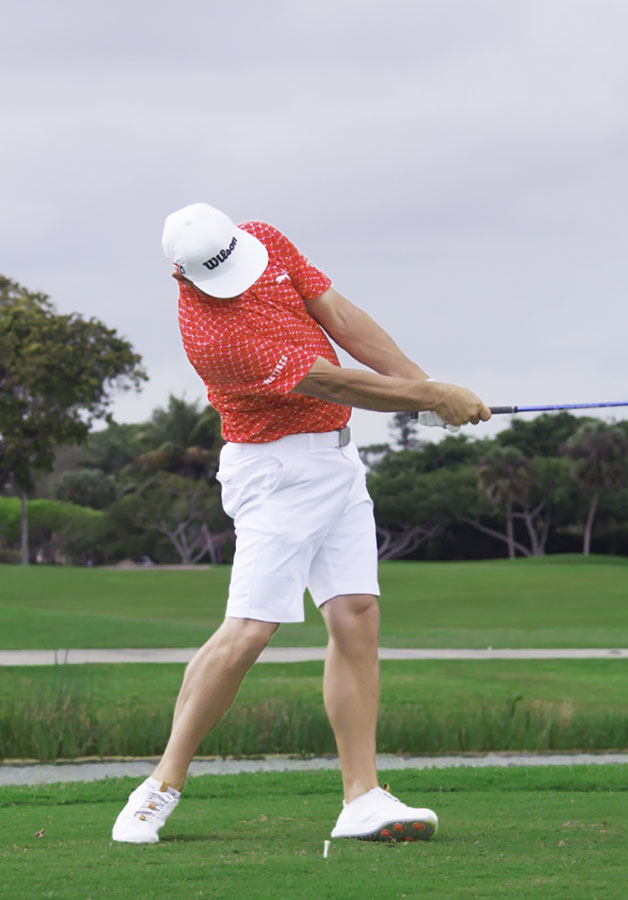 I also want to talk about the role of my lower body, because it’s really the key to driving it great. Even before I swing, my legs are active. I’m pressuring the ground, feeling like I’m gripping it with my toes to create stability. That’s critical to winding up in the backswing.
I also want to talk about the role of my lower body, because it’s really the key to driving it great. Even before I swing, my legs are active. I’m pressuring the ground, feeling like I’m gripping it with my toes to create stability. That’s critical to winding up in the backswing.
Then, as I start down, I use my right side to push my body towards the target, letting all the energy I created in the backswing go forward and then left. It’s like when sprinters leave the blocks; they push off. Pete says everyone talks about getting the weight to the left side. But what causes that? It’s the right side moving forward, so you can unload into the ball.
the shot that won the open
You’ve got to chip like you putt
Butch Harmon suggested I work with Pete Cowen to revamp my short game. Pete’s thing is, good chippers know how to get the club to bottom out in the same place swing after swing. He changed my setup and technique to make that happen for me.
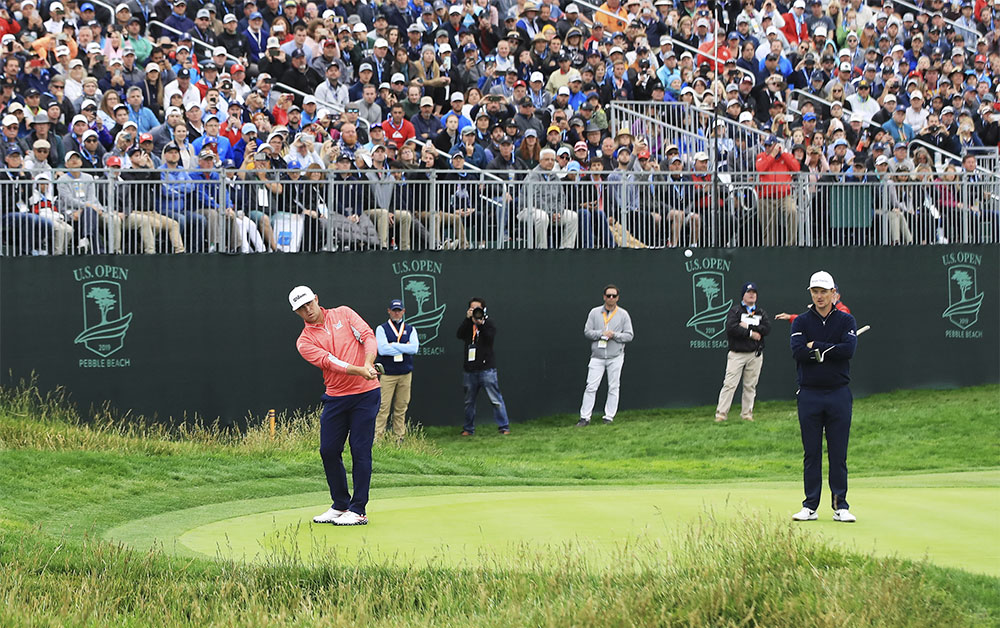
The biggest change is to set the shaft more vertical at address – a lot less lean towards the target. And hold it more upright so the heel of the wedge comes off the ground. I also stand closer to the ball and grip down.
With these setup adjustments, I can make a swing that feels a lot like a putting stroke, and the club just glides along the turf after striking the ball. There’s no dig, which is why I was able to hit that shot off the 17th green so well [left]. With my old technique, I might have chunked it or skulled the ball over the green. Instead, it floated off the face and checked near the cup. Considering the magnitude of the moment, that was control on multiple levels.
Read on for more instruction from Australian Golf Digest.
Gary Woodland spoke with Ron Kaspriske.

